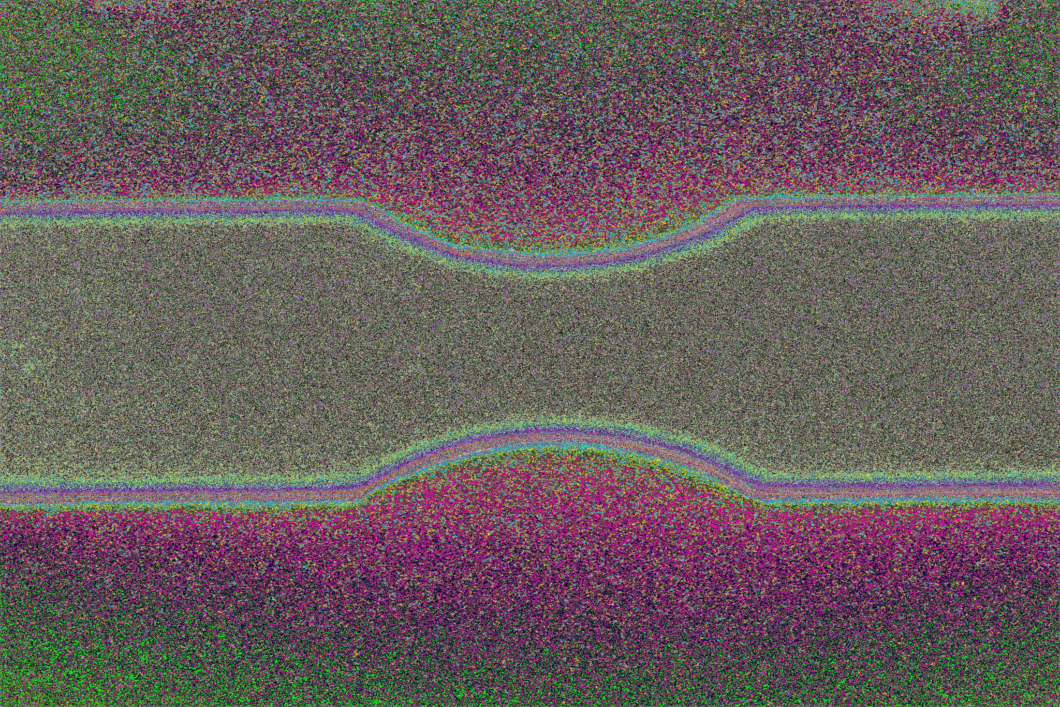
Neutron image of a hydrogen-containing tensile test in false colors
Source: BAM, division Weld Mechanics
In this work we point out some problematic effects arising when performing quantitative imaging experiments with neutrons. The intensity induced in the scintillator due to optical scattering is independent from the irradiated material but depends on the sample geometry and the distances between the region of interest and highly irradiated areas of the scintillator. It can be reduced by either using the full detector area for imaging or by shielding the unused detector areas from neutrons with non-transparent material. This is recommended especially for more complex sample geometries and when intensity trends are in focus.
The contribution of scattered neutrons to the detected total intensity is dependent on the sample-detector distance and the scattering behavior of the sample material. We have shown that additional measurements with varying sample-detector distances could yield the possibility to separate the transmitted intensity from the scattered intensity by fitting an appropriate distance law. Alternatively, if the loss of spatial resolution is not important, an increase of the distance between the sample and detector is a suitable approach to reduce such scattering effects. This would also reduce the shown edge effect, which is partially caused by scattered neutrons. The other contributing effect is the refraction of neutrons on smooth surfaces that are not aligned exactly parallel to the incoming beam. This shows the importance of a very accurate sample alignment. A rougher surface did not show an additional intensity peak due to total reflection.
On the Genesis of Artifacts in Neutron Transmission Imaging of Hydrogenous Steel Specimens
Beate Pfretzschner, Thomas Schaupp, Andreas Hannemann, Michael Schultz, Axel Griesche
published in the Journal of Imaging, Vol. 6, Issue 22, pages 1-10, 2029
BAM, division Weld Mechanics


